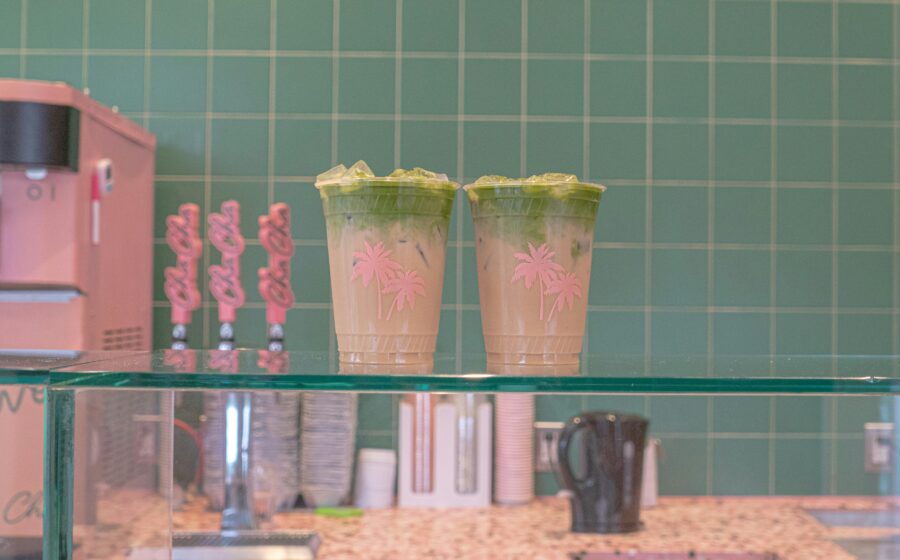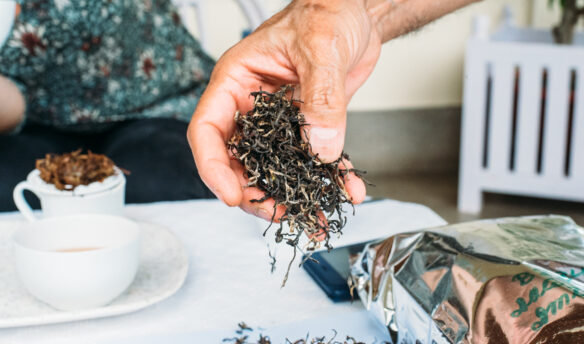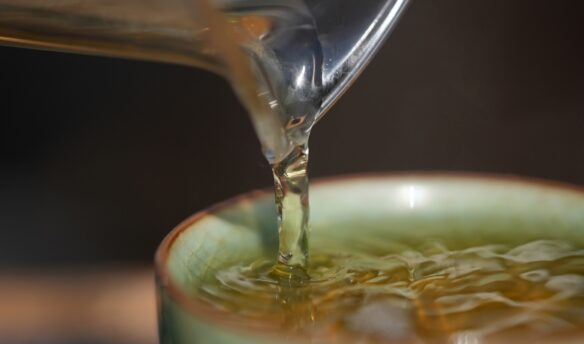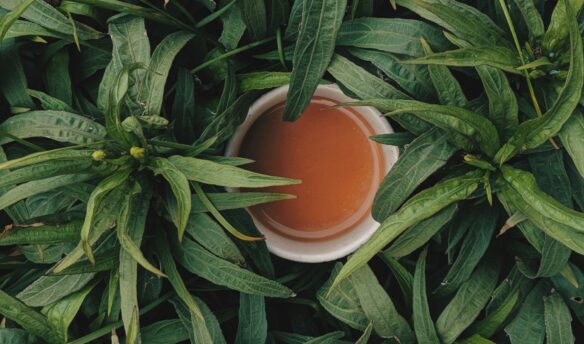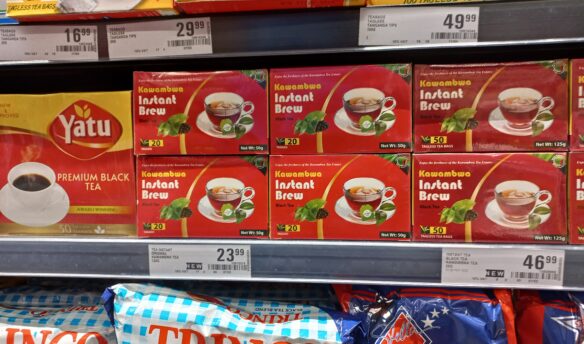With its striking verdant color and supposed wellness benefits, matcha—made with finely ground green tea powder that’s primarily produced in Japan—is one of the fastest-growing beverages for coffee shops across the country. The global matcha market is projected to reach $7.43 billion by 2030, and shows no signs of slowing down. At this point, matcha is developing its own subgenres—a matcha gelato shop called Aokō Matcha just opened in New York City in August.
According to consumer insight platform Tastewise, there’s been a 19% year-over-year increase of consumer interest in matcha across social media, including searches for matcha recipes and the appearance of matcha on menus. The average price of matcha items in foodservice rose 14% over the same time period. Demand for organic matcha has been especially explosive, with a 21.4% YoY increase in cost due to rising interest and limited supply.
If matcha drinks dominating your social feeds feels new, Michael Cramer, the CEO of tea distribution company Adagio Teas, has a guess why. “The vivid green beauty of high-quality matcha makes it a natural star in photos and videos,” he says.
Cramer adds that he started seeing a sharp uptick in matcha sales around September 2024. His wholesale matcha sales have jumped 100% over the past year, while consumer sales are also up 15% compared to 2024.
It’s natural to ask what the future looks like for matcha, a drink that’s been consumed for centuries but is now experiencing a seemingly impossible ascendancy—so much so that many outlets have reported on matcha shortages. As businesses scramble to get their hands on matcha and meet growing demand, the question becomes: Just how long will this matcha mania last?
Matcha Madness
“I think health and wellness, as well as social media hype, are driving the craze,” says Vinay Patidar, owner of Panda Coffee House in Denver. Panda has a dedicated matcha section on its menu, featuring seven different hot and cold drinks. “We’ve noticed matcha really is a generational shift as well, with younger crowds look[ing] for alternatives from the crash and burn of espresso-based drinks and shift to healthier options.”
“Beyond aesthetics, it’s the wellness benefits and gentle, sustained energy boost that keep consumers coming back,” says Cramer. “In the wake of modern stressors and a global pandemic, personal wellness has become a top priority—and matcha fits seamlessly into that lifestyle shift.”
Cramer adds that consumers are increasingly seeking out premium matcha options—and have become more interested in the origin, grade, and traditional preparation of matcha beyond the standard latte serve.
As a result of the surge in demand for Japan-grown matcha, many tea farmers have converted to matcha production. This shift benefits matcha drinkers, but may not be ideal for those who prefer traditional Japanese loose-leaf teas, such as Gyokuro and fine Sencha.
Even still, growers in Japan notified Adagio of looming shortages this summer, and Cramer says prices have increased noticeably compared to last year. Adagio is importing significantly more matcha this year and has yet to raise prices, but Cramer says it may need to do so if prices don’t improve and tariffs are not rescinded.
“Matcha shortages are being driven by both the surge in global demand and challenging weather conditions this growing season, which have reduced yields,” Cramer says.
What makes matcha’s sudden rise in popularity feel untenable is how precarious trends can be. “The concern is that we can’t predict if—or when—the craze will taper off, which could leave farmers and vendors facing a sudden glut of product,” Cramer says.
Patidar says that shortages have forced him to switch matcha suppliers three times this year. He’s also on waitlists until August 2026 for matcha from some of his favorite farms. “I fortunately do tremendous research and have a few backup companies that I can rely on even in tighter times—the downside is the price increases,” he says. One company Panda Coffee works with raised prices by 150% in July.
What’s Fueling Growth?
Justin Christopher—the manager of e-commerce and marketing at California’s Klatch Coffee—says the company is on track to sell four times as much matcha in 2025 as it did in 2022, and 60% more than just last year. He says he believes the increasing awareness around alternative milks (Klatch’s matcha latte is prepared with oat milk by default) and growing popularity of iced beverages are playing a role in its dominance.
“Customers interested in iced beverages seem willing to try a non-coffee alternative as a refreshing change of pace, especially during hot weather,” he says.
The Coffee Bean & Tea Leaf, a chain with locations across the U.S., has been serving matcha for two decades, but saw a surge in demand over the past year. In response, it launched limited-time drinks, like an iced ube coconut cream matcha latte, to capitalize on the matcha craze.
Similarly, at Lavender Coffee Boutique in Denver, founder Lindsey Sozio is also combining matcha with other adaptogenic ingredients and unique flavors. The cafe’s summer menu featured a watermelon matcha spritz and a sakura matcha latte with schisandra berry and rose petals.
“The popularity of matcha has skyrocketed so dramatically that there have been times when it’s been a real challenge to keep up with the demand,” Sozio says. She serves organic matcha from Rishi Tea and has noticed that consumers have become more educated about matcha, asking questions about the grading and whether it’s been pre-sweetened.
Patidar points out that there is no regulation around calling matcha “ceremonial,” so he recommends inquiring about the specific farms that suppliers work with to learn more about when and where the matcha was harvested. “Most high-grade matcha will be vibrant in color, rich, and with smooth flavor with no bitterness,” he says.
It remains to be seen whether price increases, which have been compounded by tariffs on Japanese exports, and shortages of high-grade matcha will rein in the growth. But for now, matcha is most definitely having a moment.



